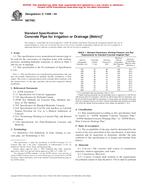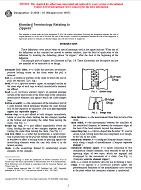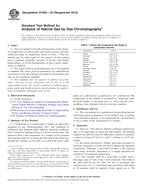1.1 This specification covers manganese-molybdenum and manganese-molybdenum-nickel alloy steel plates for use in the quenched and tempered condition for the construction of welded pressure vessels.
1.2 This specification includes four types of chemical analysis and three classes of strength levels as follows:
Nominal Nominal Molybdenum Nickel Content, Content, Type % % A 0.50 … B 0.50 0.55 C 0.50 0.85 D 0.50 0.30 Tensile Strength, Class ksi [MPa] 1 80-100 [550 to 690] 2 90-115 [620 to 795] 3 100-125 [690 to 860]
1.3 The maximum thickness of Class 1 and Class 2 plates is limited only by the capacity of the composition to meet the specified mechanical property requirements; however, current practice normally limits the maximum thickness to 12 in. [300 mm].
1.4 The maximum thickness of Class 3 plates is 2 1/2 in. [65 mm].
1.5 The minimum nominal thickness of plates of all classes is 0.25 in. [6.5 mm].
1.6 These alloy steel plates in the as-rolled condition are sensitive to cracking during transit and handling, particularly in thicknesses over about 1 or 2 in. [25 or 50 mm]. They should be shipped in the as-rolled conditions only with the mutual agreement of manufacturer and fabricator.
1.7 Plates covered by this specification are often used in the beltline region of nuclear reactor vessels where the material properties may be affected by high levels of radiation. Appendix X1 provides some information pertinent to this usage.
1.8 The values stated in either inch-pound units or SI units are to be regarded separately as standard. Within the text, the SI units are shown in brackets. The values stated in each system are not exact equivalents; therefore, each system must be used independently of the other. Combining values from the two systems may result in nonconformance with the specification.
Product Details
- Published:
- 09/10/1999
- Number of Pages:
- 3
- File Size:
- 1 file , 28 KB


